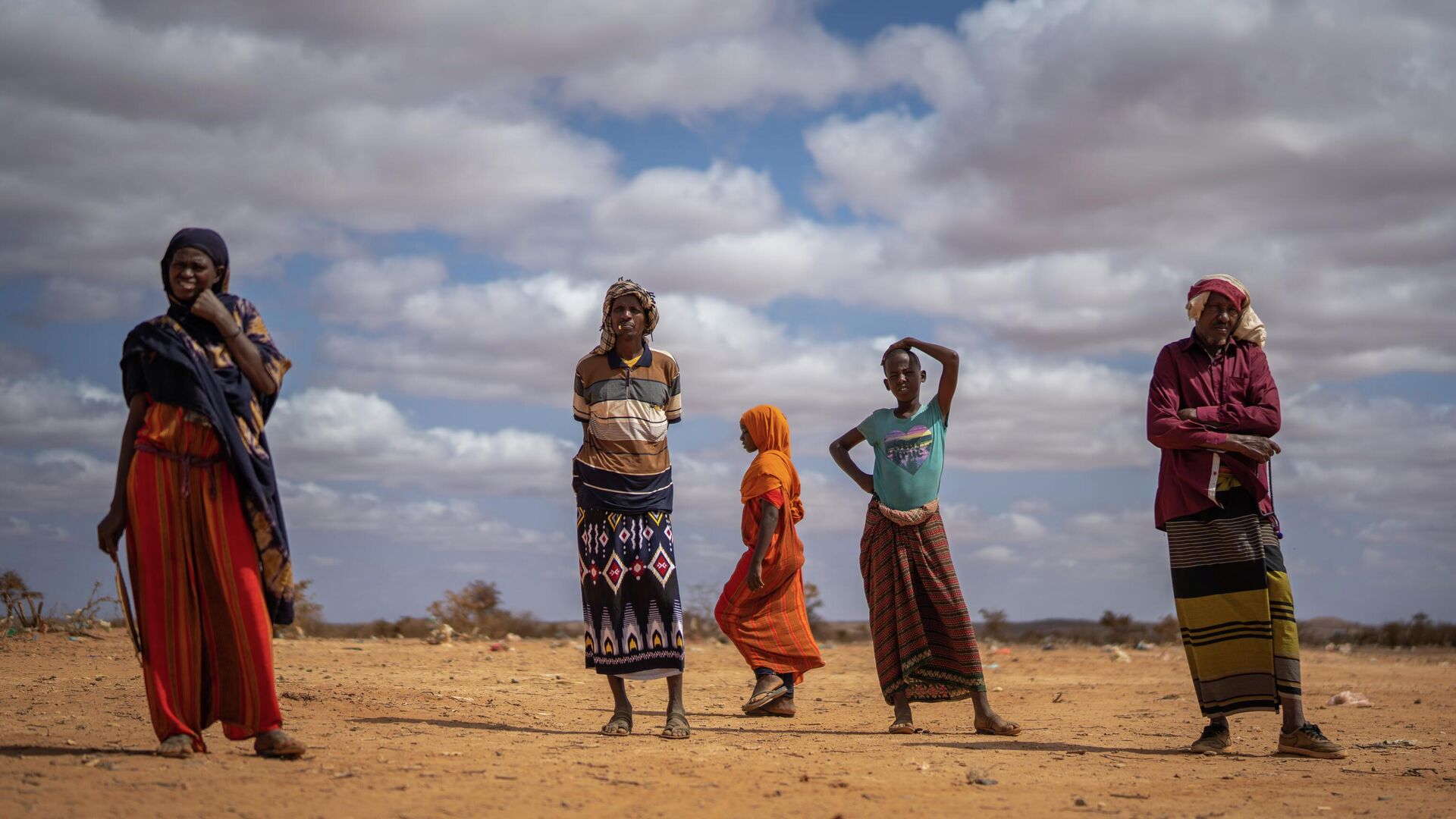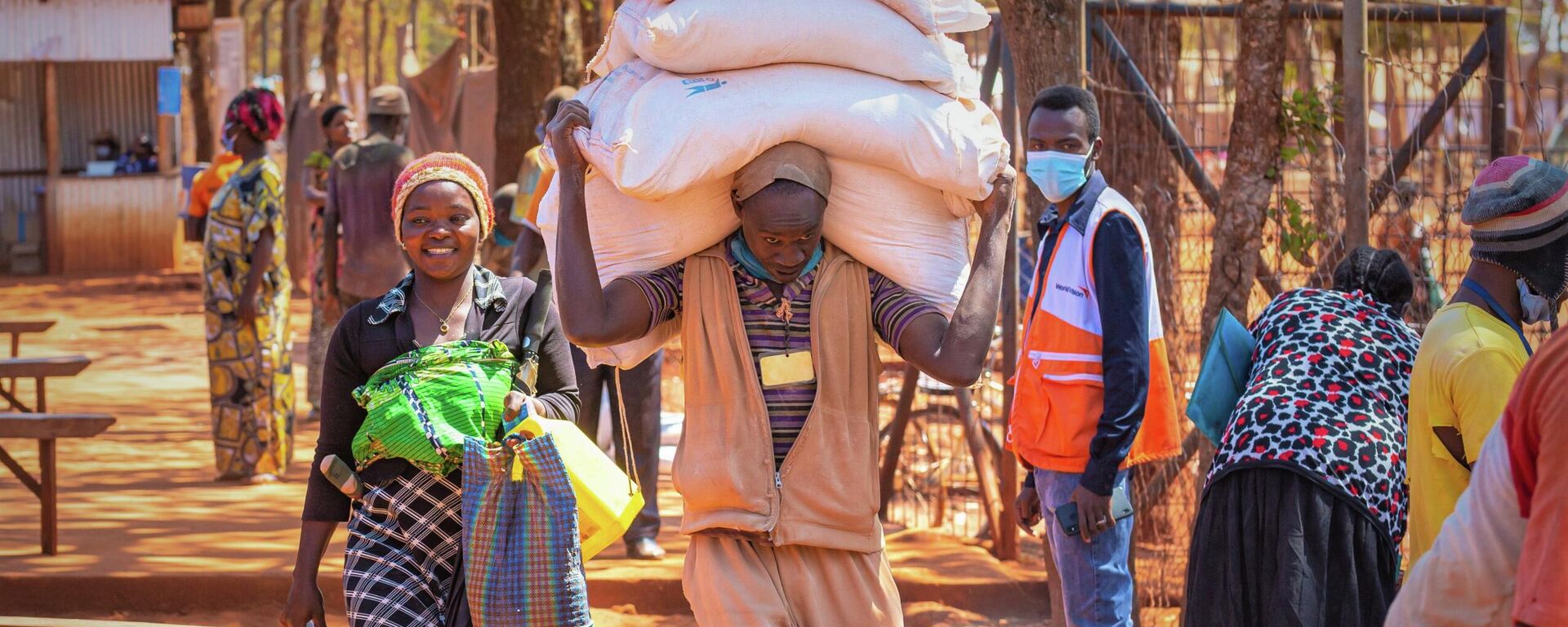UNHCR: Dadaab Camps Overstretched as Drought & Violence Rage on in Somalia
19:25 16.12.2022 (Updated: 19:02 21.08.2023)

© AP Photo / Jerome Delay
Subscribe
Kenya's Dadaab is the largest refugee camp in Africa. Founded 30 years ago it still houses hundreds of thousands of displaced Africans. Sputnik obtained a comment from the United Nations High Commissioner for Refugees (UNHCR) on the situation in the camp as drought and violence continue to force people to leave their homes.
"Insecurity and drought related famine are the two major factors forcing people to leave Somalia to come to Kenya. New arrivals told UNHCR that they have experienced conflict, violence, including gender-based violence, forced recruitment, extortion, and other atrocities. This is exacerbated by the recent drought that has hit the region over the last two years, leading to failed crops and dying animals, which are their major sources of livelihood," UNHCR stated.
Dadaab comprises three camps: Dagahaley, Hagadera and Ifo. The site is run by UNHCR while its operations are funded by foreign donors. As of November 30, Dadaab refugee camps host more than 230,000 refugees and asylum-seekers, according to the agency.
The Dadaab camps were constructed in 1992 to host the people escaping the Somali Civil War. The conflict started in 1991 after the ousting of Mohamed Siad Barre, a Somali head of state and general. For decades, the country's development has been disrupted by armed conflicts, internal divisions, terrorist activities, disease outbreaks and poverty.
To complicate matters further, the Greater Horn of Africa has been hit by the worst drought in more than four decades and one of the worst hunger crises of the last 70 years. People have been left without food as their livestock die and the drought has undercut their ability to grow crops. In Somalia, the disaster forced over 1.3 million people to abandon their farms and flee to displacement sites.
"More than 80,000 new arrivals over the last two years, of which 45,000 have arrived in 2022, due to the ongoing insecurity and drought in Somalia," UNHCR commented. "Refugees living in the Dadaab refugee camps, and their host communities have been welcoming new arrivals and sharing the limited resources they have. Adequate space in the camps, where new arrivals are sheltered, is currently running out, forcing many to reside in makeshift shelters along the outskirts where clean water and sanitation facilities are either insufficient or non-existent."
According to UNHCR, most of the new arrivals come from Somalia and are women and children. Some of the women have arrived alone as their pastoralist husbands opt to stay behind to care for the few animals they have managed to save from the drought.
"There are also relatively high numbers of separated children with their caregivers," the UN agency specified. "Of more than 4,000 individuals with specific needs, 29% are separated children. Most of their caregivers are extended family members to whom the children were handed to prevent them from being forcefully recruited by armed groups in Somalia. Most are arriving in squalid, barest conditions with very few possessions."
The agency pointed out that refugees "have access to all basic services provided in the camps, including pre-primary, primary and security education, medical services, shelter, water and food." However, "the overcrowded camps are also stretching existing services including water, sanitation, and hygiene with attendant consequences, including a recent, now contained cholera outbreak and the possibility of resurgence of COVID-19 cases."
"Thus, there is a need for adequate space and better services to properly accommodate the refugees and asylum-seekers, including new arrivals," the agency said. "The existing facilities in the refugee camps are currently overstretched due to the new arrivals, which has significantly increased the size of the camp population."
In June 2022, UNHCR launched a Drought Response Emergency Appeal for the Horn of Africa. The UN agency requested $42.6 million from the international community to respond to the needs of 1.52 million people affected by the drought in Ethiopia, Kenya and Somalia, including a budget of $11.1 million for Kenya. However, less than half of the required funds have been raised to date, according to UNHCR.
"Humanitarian workers in Kenya often battle multiple crises in a difficult environment, of which the drought situation is the latest situation that has had a big impact on the operations," UNHCR said. "Human suffering, heavy workloads, limitations on movement, especially security-related restrictions in Dadaab, and lack of sufficient program funding are some of the current challenges facing staff working in the camps. However, UNHCR and partner staff are managing these hardships to stay and deliver protection and assistance to the people we care for."
One should bear in mind that Kenya is also hit by the severe drought alongside Somalia; therefore, humanitarian workers in Kenya are facing challenges comparable to those of refugees.
Presently, UNHCR and partner organizations are working to find solutions and provide water, sanitation and hygiene facilities in the refugee camps and solve acute problems caused by environmental matters and lack of funding.
"We are calling on the international community to support UNHCR and our partners to ensure the protection and assistance to the refugees in Kenya together with the host communities," UNHCR emphasized in its comment.


